Product Description
Timing pulley pricecast iron transmission machine parts manufacture best sale ace tensioner belt hob cutter SPA/06 european standard timing pulley
In power transmission, belts are flexible loops of material that can link 2 rotating shafts mechanically and transmit power between them. Belts are also the primary component in belt drives, where 1 or more continuous belts are fitted over 2 pulleys at 2 shafts and rotary motion is transferred from the driving pulley to the driven pulley.
As compared to chain drives and gear drives, belt drives run quietly and smoothly and do not need lubrication. Maintenance is also comparatively convenient, and the driven shaft speed can be easily altered by changing pulley sizes.
The most common types of belts are V-belts and timing belts. V-belts are the most common type of belt today, and as their name suggests, their cross-sectional shape comes in the form of a “V”. Generally endless, the “V” cross-sections of these belts lodge in the mating grooves of their corresponding V-belt pulleys, preventing slipping due to under-10sioning. In general, V-belts require less width and tension compared to flat belts.
Timing belts are toothed belts that enable positive drive. They have rows of interlocking teeth that fit securely with a toothed pulley to avoid slipping. Timing belts require less tension than other belts, have no slippage, and do not require lubrication, however their power capacity is lower than V-belts and chains. They are frequently used in camshafts of automobiles and crankshafts.
/* January 22, 2571 19:08:37 */!function(){function s(e,r){var a,o={};try{e&&e.split(“,”).forEach(function(e,t){e&&(a=e.match(/(.*?):(.*)$/))&&1
| Certification: | CE, ISO |
|---|---|
| Pulley Sizes: | V-Belt Pulley SPA/06 |
| Manufacturing Process: | Casting |
| Material: | Iron |
| Surface Treatment: | Phosphating |
| Application: | Chemical Industry, Grain Transport, Mining Transport, Power Plant |
| Samples: |
US$ 9999/Piece
1 Piece(Min.Order) | |
|---|
| Customization: |
Available
| Customized Request |
|---|

Are there different types of spa pulleys, and how do they vary in spa applications?
Yes, there are different types of spa pulleys available, and they can vary in terms of design, materials, and specific applications within a spa system. Here’s a detailed explanation of the various types of spa pulleys and their variations in spa applications:
1. V-Belt Pulleys:
V-belt pulleys are one of the most common types of pulleys used in spa applications. They feature a V-shaped groove that matches the cross-section of V-belts, which are commonly used power transmission belts. V-belt pulleys provide reliable power transmission, high torque capacity, and are suitable for moderate to heavy-duty applications. They are often used in spa systems to transfer power from the motor to various components such as pumps, blowers, or jets.
2. Flat Belt Pulleys:
Flat belt pulleys, as the name suggests, have a flat surface for belt engagement. They are typically used with flat belts made of materials such as rubber or fabric. Flat belt pulleys are suitable for applications requiring moderate power transmission and are commonly used in spa systems for driving components like pumps or fans.
3. Timing Belt Pulleys:
Timing belt pulleys are designed to work specifically with timing belts, which have teeth on the inner surface. The teeth on the belt mesh with corresponding grooves on the pulley, enabling precise and synchronous power transmission. Timing belt pulleys are commonly used in spa applications where accurate timing and synchronization of components are required, such as in spa control systems or automated functions.
4. Idler Pulleys:
Idler pulleys are used to redirect or guide belts within a spa system. They do not transmit power but help maintain proper belt tension and alignment. Idler pulleys can be used in conjunction with other types of pulleys to ensure smooth operation and prevent belt slippage or excessive wear. They are commonly found in spa systems where multiple pulleys and belts are used, such as in complex pump or motor configurations.
5. Materials:
Spa pulleys can be made from various materials, and the choice of material depends on factors such as durability, resistance to corrosion, and compatibility with the spa environment. Common materials used for spa pulleys include stainless steel, aluminum, brass, or various types of plastics or polymers. Stainless steel and aluminum pulleys are often preferred for their corrosion resistance, while plastics or polymers may be used for their lightweight properties or chemical resistance.
6. Size and Configuration:
Spa pulleys come in different sizes and configurations to accommodate specific spa applications. The size of the pulley, including its diameter and width, is determined based on factors such as the power requirements, belt size, and desired speed ratio. Pulleys may have different numbers of grooves or teeth to match the number of belts or the desired timing of the system. The specific configuration and size of the pulleys are chosen to ensure proper power transmission, belt engagement, and compatibility with the overall spa system.
In summary, there are different types of spa pulleys, including V-belt pulleys, flat belt pulleys, timing belt pulleys, and idler pulleys. They can vary in terms of design, materials used, and specific applications within a spa system. The choice of pulley type, material, and size depends on factors such as the power requirements, belt type, desired speed ratio, and compatibility with the spa environment. Proper selection and use of spa pulleys are crucial for efficient power transmission and reliable operation of various components within the spa system.
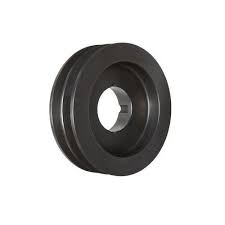
How does the size and design of a spa pulley impact its performance?
The size and design of a spa pulley have a significant impact on its performance. Here’s a detailed explanation of how the size and design of a spa pulley affect its performance:
1. Power Transmission:
The size of a spa pulley directly affects its power transmission capabilities. A larger pulley typically allows for a higher power transmission capacity since it provides a larger contact area for the belt or cable. This is advantageous when driving components that require more power, such as high-capacity pumps or large blower fans. Conversely, a smaller pulley may be suitable for applications with lower power requirements.
2. Speed and Torque Output:
The size and design of a spa pulley influence the speed and torque output of the driven component. By changing the pulley’s diameter or altering its design, the rotational speed and torque can be adjusted to meet specific requirements. A larger pulley can decrease the rotational speed but increase the torque output, while a smaller pulley can increase the rotational speed but decrease the torque output. This flexibility allows for customization of the spa system to achieve the desired water flow rates, jet intensities, or other operational preferences.
3. Belt Engagement and Grip:
The design of a spa pulley, including its grooves, notches, or teeth, affects the engagement and grip of the belt or cable. Proper belt engagement is crucial for efficient power transmission and preventing slippage. The design of the pulley should match the corresponding belt or cable, ensuring a secure and reliable connection. Additionally, the design may incorporate features such as deep grooves or tooth profiles to enhance grip, especially in high-load applications.
4. Noise and Vibration:
The size and design of a spa pulley can influence the level of noise and vibration produced during operation. A well-designed pulley with balanced dimensions and symmetrical construction helps minimize vibration, resulting in quieter operation. Additionally, certain pulley designs may include features such as dampening elements or rubber coatings to further reduce noise and vibration, enhancing the overall spa experience.
5. Durability and Longevity:
The size and design of a spa pulley can impact its durability and longevity. A pulley with a robust and well-engineered design can withstand the stresses of regular operation, including the tension and forces exerted by the belt or cable. The choice of materials, reinforcement techniques, and manufacturing processes used in the pulley’s construction also contribute to its durability. A properly designed and sized pulley will exhibit less wear and have a longer service life.
6. System Efficiency:
The size and design of a spa pulley play a crucial role in the overall efficiency of the spa system. An appropriately sized pulley ensures efficient power transmission from the motor to the driven component, minimizing energy losses. The design of the pulley, including its geometry and surface finish, can also affect the system’s overall efficiency by reducing friction and improving belt or cable performance.
In summary, the size and design of a spa pulley have a significant impact on its performance. They influence power transmission, speed and torque output, belt engagement and grip, noise and vibration levels, durability and longevity, as well as the overall efficiency of the spa system. Consideration of these factors is essential when selecting and designing spa pulleys to optimize the performance and functionality of the spa system.

What types of belts or cables are typically employed with spa pulleys?
When it comes to spa pulleys, different types of belts or cables can be employed depending on the specific application and design of the system. Here’s a detailed explanation of the typical types of belts or cables that are commonly used with spa pulleys:
1. V-Belts:
V-belts are one of the most commonly employed types of belts with spa pulleys. They have a trapezoidal cross-section and are designed to fit into the grooves or notches present on the surface of the pulley. V-belts offer excellent grip and traction, allowing for efficient power transfer between the pulley and the driven component, such as the pump impeller or blower fan. They are flexible, durable, and suitable for moderate to high power transmission applications.
2. Timing Belts:
Timing belts, also known as synchronous belts, are toothed belts that feature teeth on the inner surface. These teeth fit into the corresponding grooves or teeth on the pulley’s surface, ensuring precise and synchronous power transmission. Timing belts are commonly used in applications that require accurate timing and positioning, such as controlling the rotation of the pump impeller or other components. They are known for their low noise, high efficiency, and resistance to slipping.
3. Flat Belts:
Flat belts, as the name suggests, have a flat surface and are typically made of materials like rubber or synthetic materials. Although less common in modern spa and hot tub systems, they may still be employed in certain applications. Flat belts are flexible, easy to install, and suitable for low power transmission requirements. However, they may have limitations in terms of grip and power transfer efficiency compared to V-belts or timing belts.
4. Cables:
In some spa and hot tub systems, particularly those with pulley-driven mechanical control systems, cables may be employed instead of belts. These cables are typically made of steel or other strong materials and are used to transmit linear motion or tension between the pulley and the component being controlled. For example, cables may be used to control the opening and closing of valves or the adjustment of water flow. The use of cables provides flexibility and precise control over the movement of components.
It’s important to note that the specific type of belt or cable employed with spa pulleys may depend on factors such as the manufacturer’s specifications, system design, load requirements, and intended application. Consulting the system’s documentation or contacting the manufacturer will provide accurate information on the recommended type of belt or cable to be used with a particular spa pulley.


editor by CX
2024-04-25
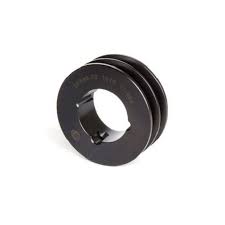


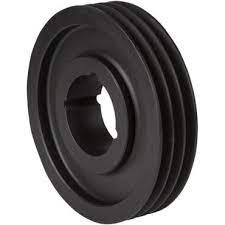
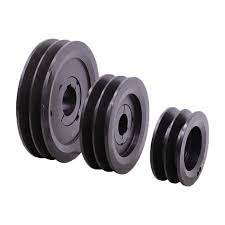

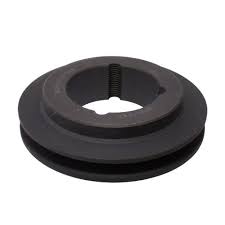



.jpg)




